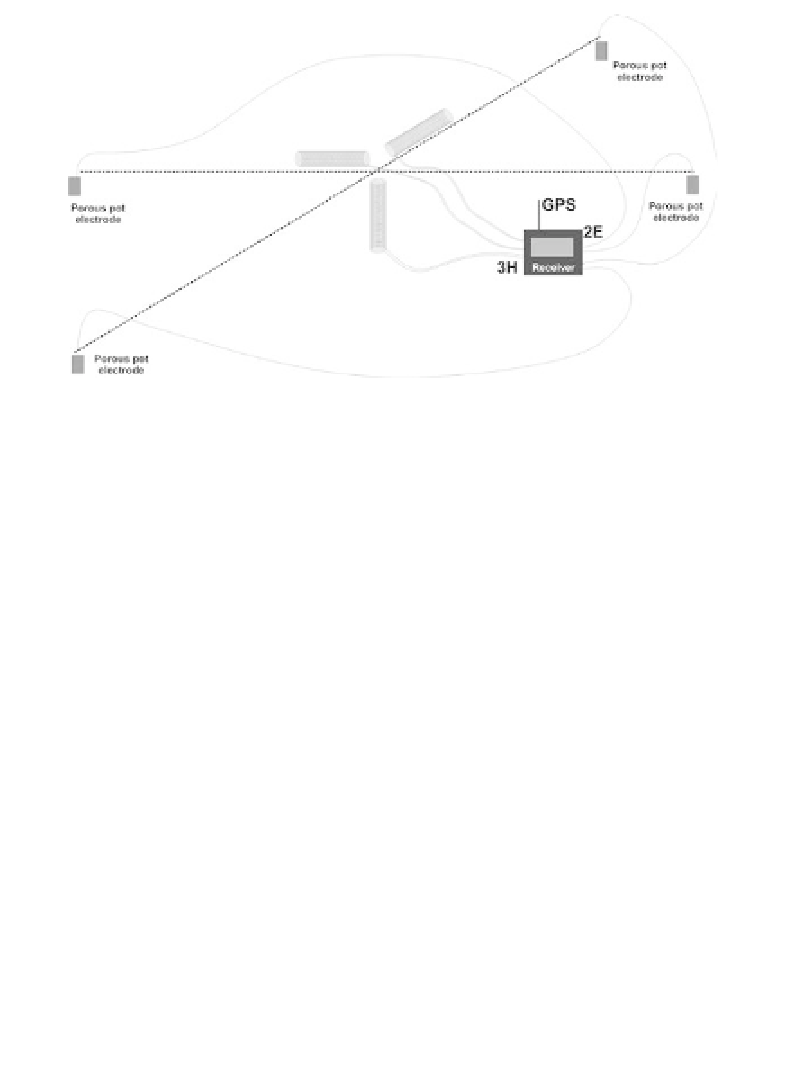Geology Reference
In-Depth Information
Figure 9.7
Typical field set-up for an E2-H3 magnetotelluric survey.
(superconducting) magnetometers or, more commonly, induction coils
wound on ferrite cores 1-2 m long and 10-20 cm in diameter. Because
propagation directions are both variable and unknown, all horizontal field
measurements require two sensors deployed at right angles to each other.
The multi-directional characteristics of the natural field are sometimes cited
as an MT 'advantage', removing strike-dependency, but in practice all the
events recorded during a typical measurement interval are likely to come
from roughly the same region of thunderstorm activity. A second survey, at
a time when the main activity is in a different province (e.g. in Africa, as
opposed to Southeast Asia) might produce a somewhat different map.
One of the most difficult decisions required in MT and AMT work con-
cerns the length of time needed for an individual measurement. A typi-
cal extended record of magnetic field variations shows a pattern of long-
wavelength oscillations on which are superimposed numerous 'spike' events
(Figure 9.2). It is these spikes that contain most of the AMT signal, and in
a 20-minute period their number may range from only a few dozen to more
than 1000. The recording time, which must be long enough to record a suf-
ficient number, will vary not only with locality but also, as noted in Section
9.1.1, with season and time of day. Half an hour would be considered a
minimum in many circumstances, since the high noise levels demand high
stacking ratios. It is the relatively long time required for each individual read-
ing that has encouraged the use of multiple recorders, and an ideal way of
using these would be to position them in daylight and record overnight.

